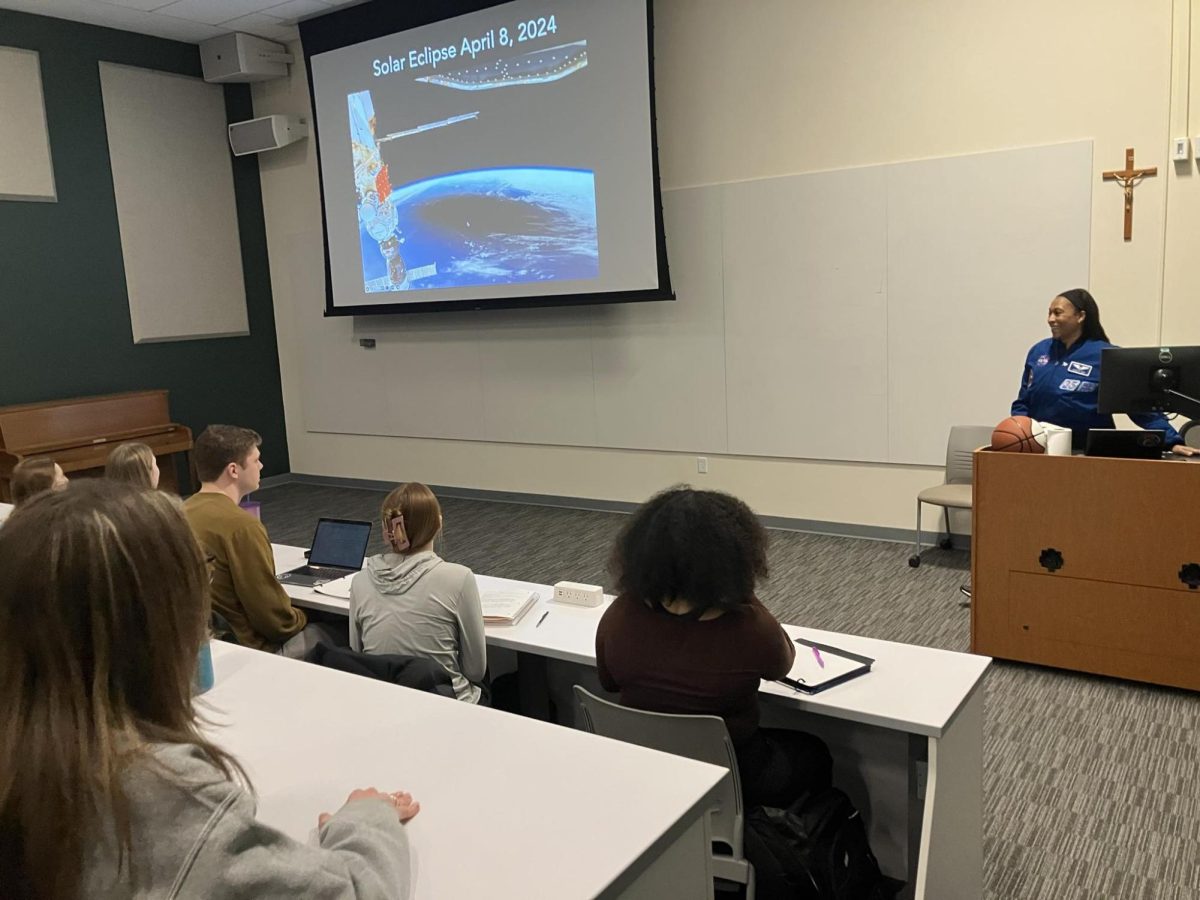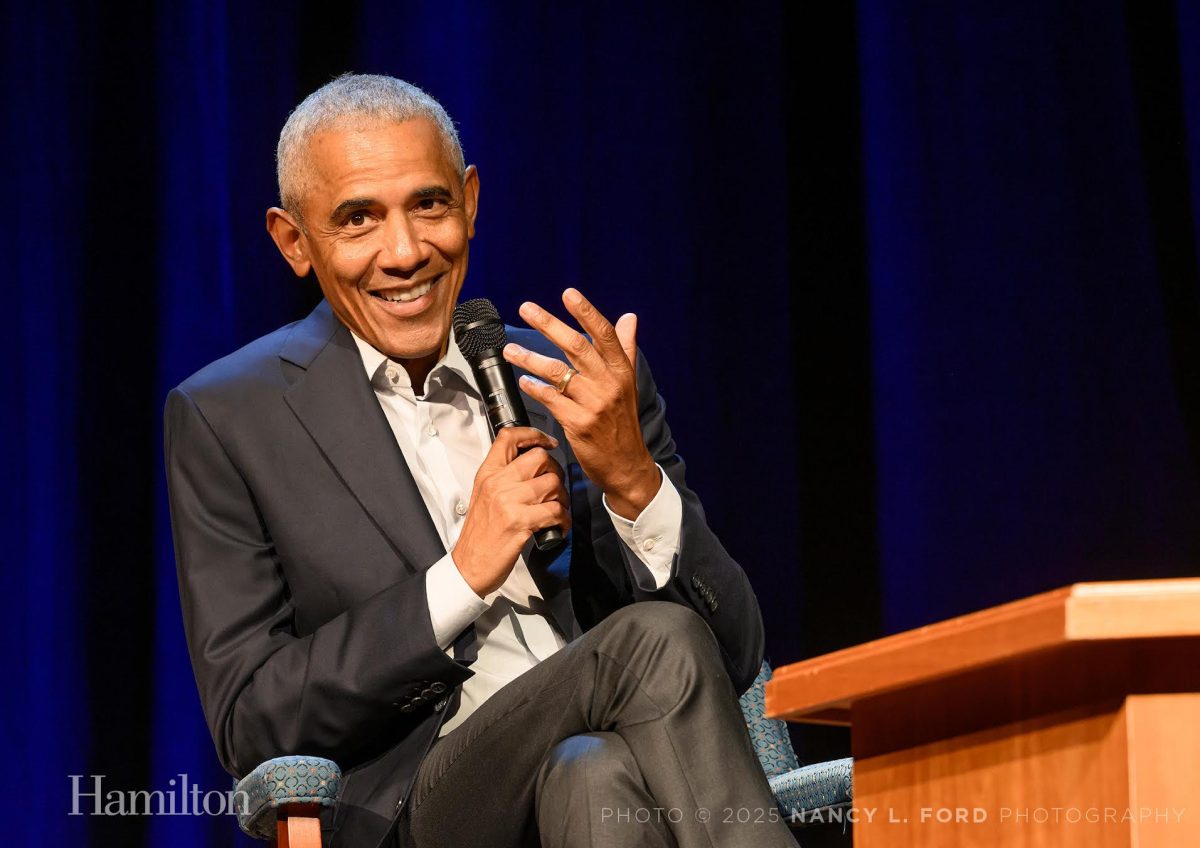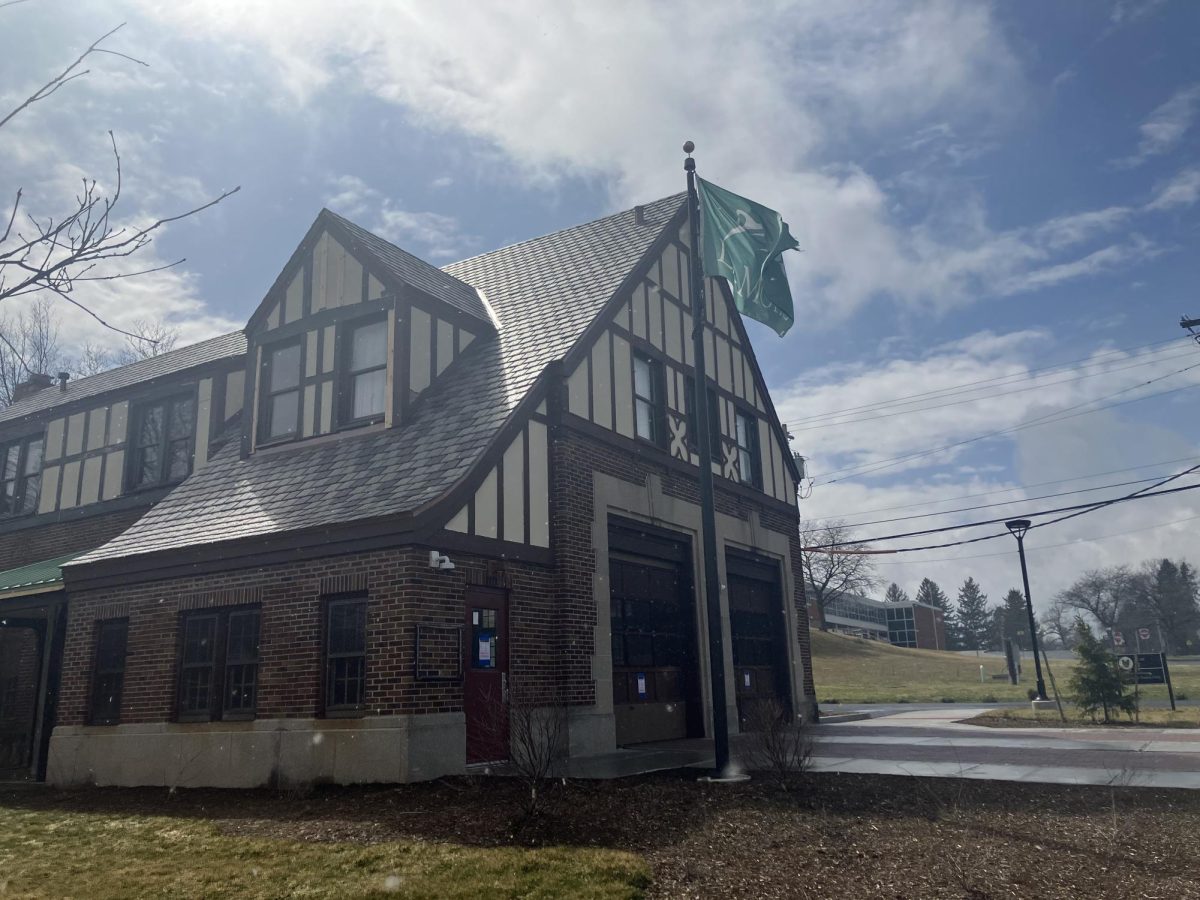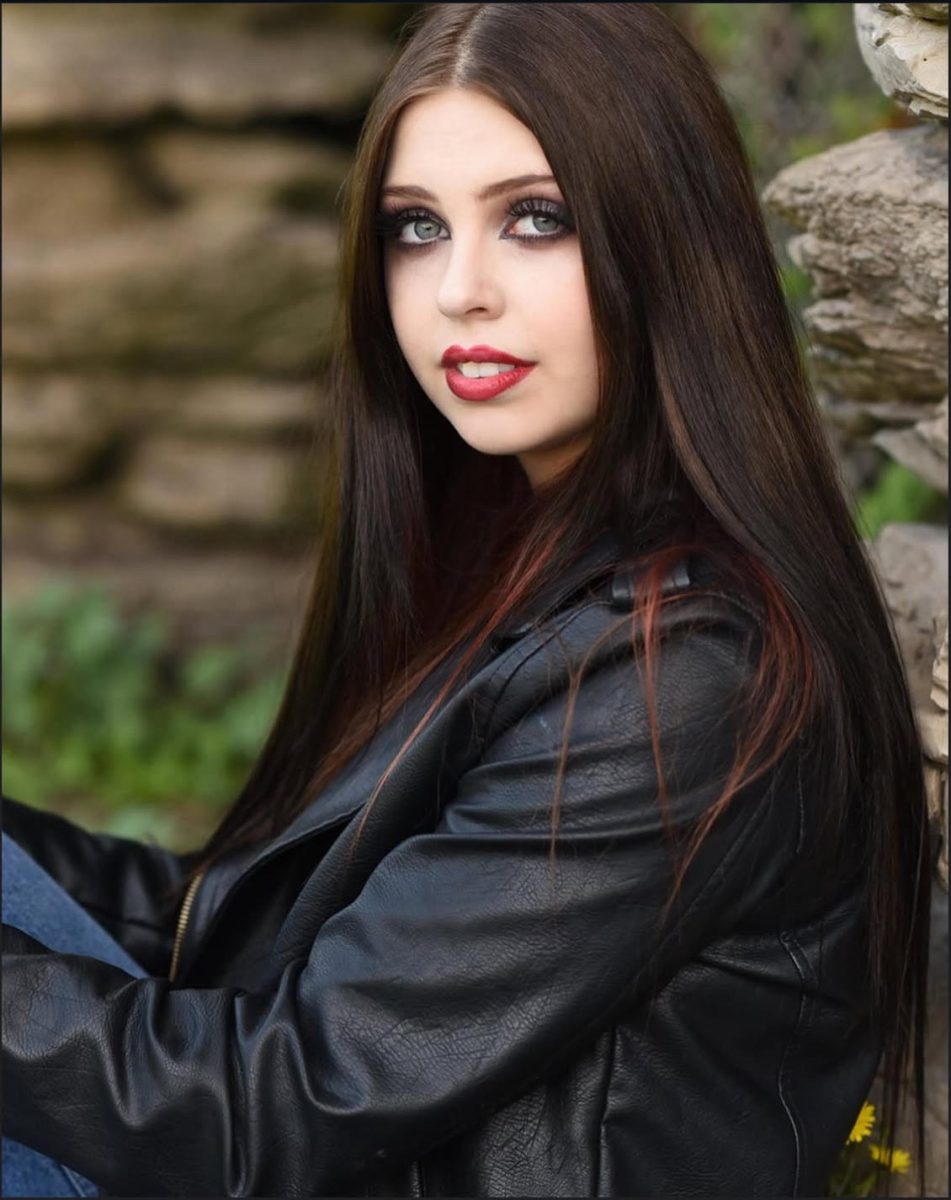Jeanette Epps really has two homes.
One, she said, involved 235 days in space as a NASA astronaut.
The other, she said, is on Earth – beginning with her childhood years on the South Side of Syracuse.
She felt so at home in space that coming back was “bittersweet,” she said. And being able to see one home from another, during her months in orbit, made her realize just how fragile life is here on Earth, so “lonely” in the vastness of space.
“We are thoughtless toward each other,” Epps told a lecture hall full of Le Moyne College students last Tuesday. “We need to be good to each other.”
Epps is a Le Moyne alumnus, raised in Syracuse, who recently returned from almost eight months in orbit. This week, she paid a two-day visit to the Le Moyne campus, including an interview with a Le Moyne 300-level journalism class (an event opened up to other students, as well) that turned into a moving question-and-answer session with at least 60 students in a packed space at Reilly Hall.
Epps was only expected to speak for 45 minutes. Instead, she took every question until there were no more, and remained for 75 minutes, until students had to leave for their next classes. Afterward, she stayed behind to take many individual photos with clearly enamored students.
She emphasized how Le Moyne has supported her, particularly during one of the hardest times of her life, when she was removed by NASA from a space mission in 2018.
Epps said she was “never given a real explanation” about that decision. She underlined how important she found the immediate support after that decision from many Russian cosmonauts and colleagues whom she trained with and expected to join in orbit. And she said “Le Moyne gave me so much support,” specifically mentioning President Linda Le Mura and former administrator Rev. David McCallum.
“It’s quite amazing what they did for me,” she said of the college community. “I owe Le Moyne quite a bit.”
She recalled how she realized it would be unwise to complain about the decision on social media, and instead took a “proactive” rather than “reactive” response.
In other words, reinforced by people who cared deeply about her, she remained focused on the goal she just completed this year, joining the handful of people in world history to live for an extended period in space.
“How you handle it is everything,” Epps said, noting that in any context “getting over ourselves” is critical toward accomplishing a mission.
She reflected on how fewer than 600 people on Earth have traveled to space, meaning that scientists still need to “understand the long-term impact on the human body.” In response to at least two questions about traveling to Mars, she said “I would definitely go” if the chance became available, but she said that trip is still many years away, an event that will probably happen long after she retires.
Epps said she does not believe we have to accept a one-way trip scenario for astronauts traveling to Mars. First, she said, we need to “use the moon as a test to train for Mars.” That would involve a permanent human habitat there, and hopefully finding new or additional fuel sources on the moon.
In response to a question about her message for any young women being told— directly or subtly— that they do not belong in space, Epps replied: “I’m here. Why aren’t you?” She said roughly half the human population of the world is female, and that should be reflected in the number of people the nations of the world send into space.
While she appreciates the power of her role as both an African-American and woman in the space program, she said that one thing based on knowledge and ability matters most in the end:
“Guess what: I’m an astronaut.”
That expertise and training proved critical. Epps described a harrowing episode where she and her colleagues had to work quickly to avoid dangerous space junk after a Russian satellite exploded. She said she saw no signs of other forms of life during her time in space, but believes that in the vastness of many galaxies more life must logically exist.
Asked about her most memorable day in orbit, Epps described the solar eclipse as “a big one.” She displayed beautiful photographs she took from orbit, showing the surface of the United States on the day of the eclipse — where a dark circular shadow, which she captured in her photos, looked like “someone punched a hole in the Earth.”
Near the end of her talk, she recalled a message she had just offered to students at Corcoran High School, her alma mater in Syracuse – and she provided the same advice to students at Le Moyne as they prepare to move into the world, and even beyond:
“I would dream as big as you possibly can.”
By students in CMM-374-01, ‘Beyond Breaking News’: Taylor Bonner, Aliyah Brown, Ashley Carter, Lily Christopher, Grace Crooks, Richard Dann, Dzenan Hozo, Kenan Hozo, Andrew Janowski, Sydney Laniak, Michael Leahy, Branwyn Lupton, Sophia Melone, Delaina Palmatier, Jordan Roy, Declan Sommer, Marialicia Vick, Lucy Webb and Erica Wu.






